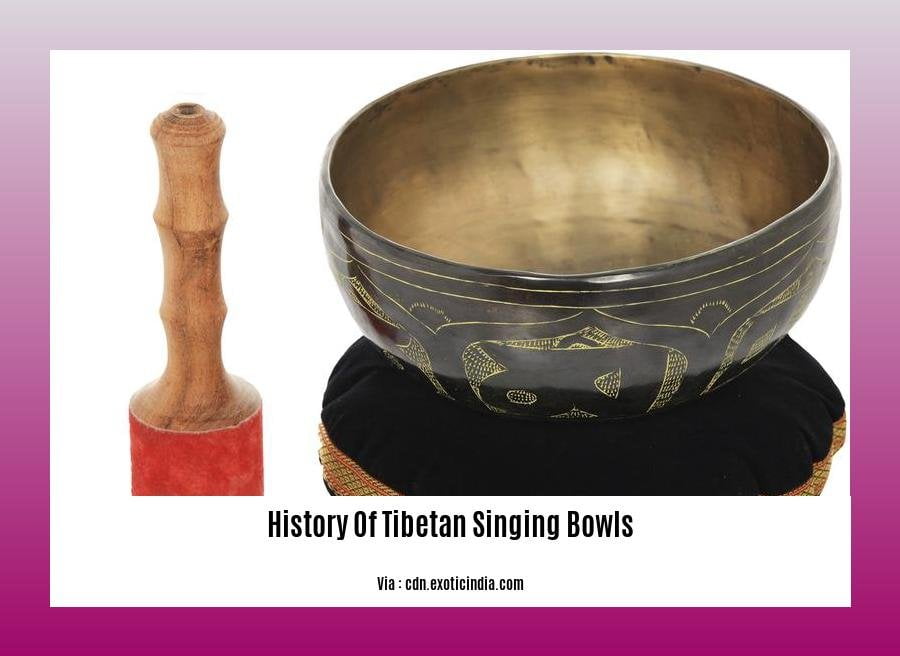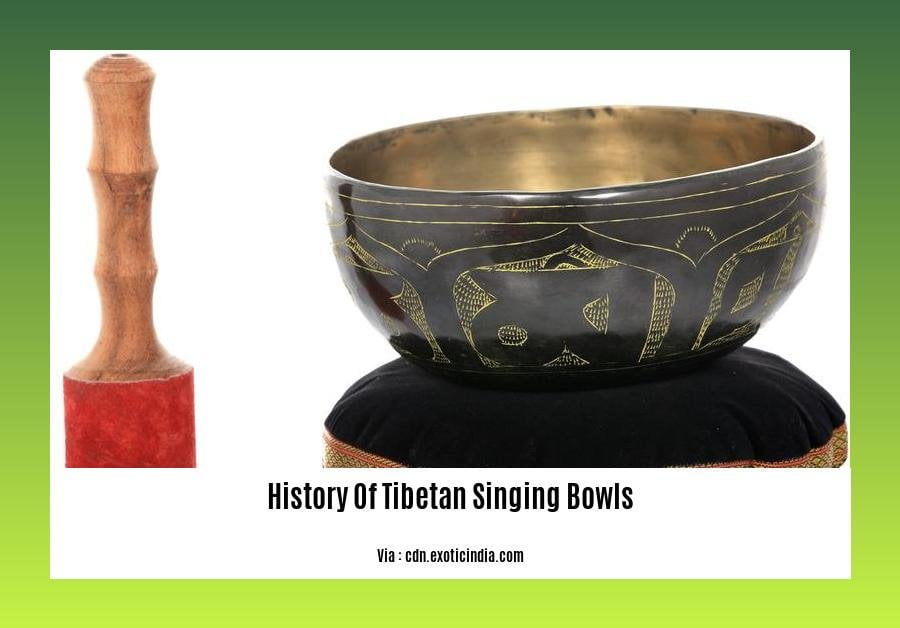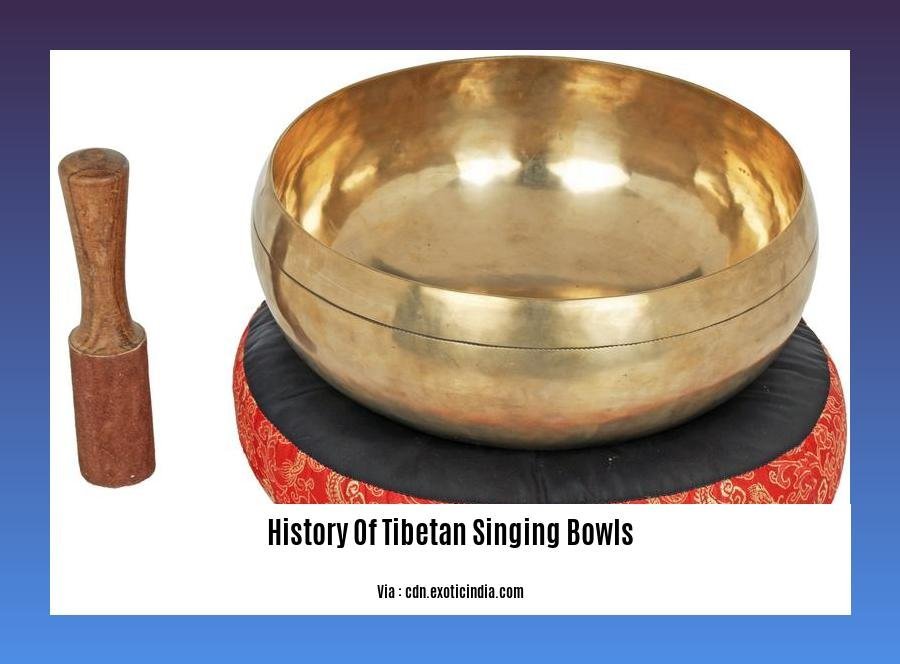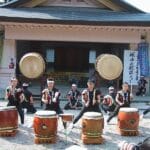Embark on a captivating journey through the annals of time as we delve into the rich history of Tibetan singing bowls in our article, [The History of Tibetan Singing Bowls: A Journey Through Time and Traditions]. These resonant sound vessels, originating in the lofty Himalayas, have played a pivotal role in ancient rituals, spiritual practices, and modern-day wellness, leaving an indelible mark on cultural traditions across the globe. Join us as we uncover the secrets of these enigmatic bowls, exploring their origins, evolution, and enduring significance in shaping the tapestry of human history.
Key Takeaways:
Tibetan singing bowls originated in India or Nepal in the 8th century A.D.
They predate Buddhism and are rooted in the pre-Buddhist Tibetan Bon culture.
The first written record of a singing bowl dates back to 1027 A.D. in Buddhist scripture.
The exact origin of Tibetan singing bowls remains a mystery, with estimates suggesting an age of at least 2,500 years.
Traditionally used in rituals and as food bowls, the history of Tibetan singing bowls has been obscured by the destruction of Tibetan monasteries in the 1950s.
History of Tibetan Singing Bowls

The history of Tibetan singing bowls is a fascinating tale that takes us back to the ancient civilizations of the Himalayas. These enigmatic sound vessels, with their haunting tones and intricate designs, have played a significant role in Tibetan culture for centuries. Let’s delve into their rich past and uncover the secrets of these remarkable creations.
Origins and Evolution
The exact origins of Tibetan singing bowls remain shrouded in mystery, but many believe that they first emerged in the 8th century A.D. in India or Nepal. Initially used for practical purposes such as food bowls and ritual vessels, these bowls gradually gained spiritual significance within the Tibetan Bon culture, a pre-Buddhist belief system.
The first written mention of Tibetan singing bowls appeared in Buddhist scriptures around 1027 A.D., suggesting their integration into Buddhist practices. Over time, these bowls became an essential tool for meditation, healing, and spiritual ceremonies.
Craftsmanship and Symbolism
Traditional Tibetan singing bowls are handcrafted using a unique alloy of metals, including copper, tin, iron, and sometimes gold or silver. The precise composition of this alloy is a closely guarded secret, passed down from generation to generation of skilled artisans.
The bowls are intricately designed with various symbols and patterns, each holding deep cultural and spiritual meaning. The most common motifs include the eight auspicious symbols of Buddhism, representing qualities such as eternity, good fortune, and harmony.
Ritualistic and Healing Practices
In Tibetan culture, singing bowls are primarily used for ritualistic and healing purposes. During religious ceremonies, the bowls are played to create a sacred atmosphere and invoke a state of mindfulness. Their soothing sounds are believed to purify the environment, promote healing, and facilitate spiritual growth.
In modern times, Tibetan singing bowls have gained popularity worldwide for their therapeutic effects. The vibrations produced by the bowls are said to have a calming and harmonizing influence on the body and mind, reducing stress, alleviating pain, and promoting deep relaxation.
Preservation and Revival
The history of Tibetan singing bowls has been marked by both preservation and revival. In the 1950s, the Chinese invasion of Tibet led to the destruction of many monasteries and cultural artifacts, including singing bowls.
However, the tradition of crafting and using these bowls survived, thanks to the dedication of Tibetan refugees who carried their knowledge and skills to different parts of the world. In recent decades, there has been a growing interest in Tibetan singing bowls, leading to a revival of their production and use.
Today, Tibetan singing bowls are cherished worldwide as symbols of peace, harmony, and spiritual well-being. Their enchanting sounds continue to resonate, connecting us to the ancient traditions of the Himalayas and offering a pathway to inner peace and tranquility.
Looking to tee off with a powerful swing? Then you’ll want to read about the history of Titleist drivers. Or maybe you’re more of a traditionalist when it comes to the links. In that case, you’ll appreciate our deep dive into the history of towels.
Origin of Tibetan Singing Bowls

The ancient Tibetan singing bowl, with its unique blend of spirituality and craftsmanship, is a captivating artifact with a history worth exploring. Its origins, steeped in the mystique of the Himalayas, are a testament to the enduring cultural legacy of the region.
Key Takeaways:
Tibetan singing bowls originated in the Himalayan region, encompassing Tibet, Nepal, India, and Bhutan, dating back over two millennia.
The precise origins of these bowls remain shrouded in mystery, with no concrete written records.
Guru Padmasambhava, a revered figure in Tibetan Buddhism, is believed to have popularized the use of singing bowls during the 8th century.
Tibetan singing bowls initially served both practical and spiritual purposes, including use as food bowls and in religious ceremonies.
The bowls gained widespread popularity beyond their Himalayan roots, reaching countries like the USA, UK, Canada, and Germany, capturing the hearts and minds of global audiences.
Unveiling the origins of Tibetan singing bowls is a journey that takes us back in time, connecting us to a rich tapestry of cultural traditions and sacred practices. These bowls, born from the wisdom of ancient civilizations, continue to resonate with seekers of peace, harmony, and inner transformation, bridging the gap between the past and the present.
History of Tibetan Singing Bowls: Wikipedia
Throughout history, Tibetan singing bowls have mesmerized people with their enchanting sounds and profound cultural significance. Originating over 2,000 years ago in the Himalayan region, their precise genesis remains shrouded in mystery, as written records are scarce. However, let’s embark on a journey to unravel the fascinating history of these resonant vessels.
Key Takeaways:
- Tibetan singing bowls have their roots in the Himalayan region, standing the test of time for over two millennia.
- The exact origins remain enigmatic, with varying theories attributing their genesis to different cultures and periods.
- Guru Padmasambhava, a revered figure in Tibetan Buddhism, is often credited with popularizing their use in the 8th century.
- Historically, the bowls served multifaceted purposes, including their use as food vessels, and later as instruments in spiritual ceremonies.
- Their global recognition has soared in recent times, capturing the attention of individuals worldwide, including those in countries like the USA, UK, Canada, and Germany.
The Enigma of Origins:
Adding to the mystique surrounding Tibetan singing bowls is the enigma of their exact origins. While some believe they emerged in India or Nepal around the 8th century A.D., others attribute their creation to the pre-Buddhist Tibetan Bon culture, tracing their lineage back even further. The earliest written mention of these bowls dates back to 1027 A.D. in Buddhist scriptures, yet their existence is believed to predate this record by centuries.
Guru Padmasambhava’s Influence:
The 8th century marked a significant chapter in the history of Tibetan singing bowls with the arrival of Guru Padmasambhava. This revered figure in Tibetan Buddhism is widely credited with popularizing the use of these bowls in religious ceremonies and meditation practices. His teachings and influence helped spread the bowls’ significance throughout the Himalayan region, leading to their widespread adoption.
Multifaceted Roles:
Tibetan singing bowls initially served practical purposes alongside their spiritual applications. In traditional Tibetan culture, they were used as food bowls, owing to their ability to preserve food for extended periods. As Buddhism became more prevalent, the bowls found their way into monasteries, where they were employed in rituals and meditation practices. Their resonant sounds were believed to promote relaxation, healing, and spiritual well-being.
Global Recognition:
In recent decades, Tibetan singing bowls have gained global recognition, transcending the confines of their Himalayan origins to reach a worldwide audience. This surge in popularity can be attributed to the growing interest in sound healing, meditation, and holistic wellness practices. Individuals in countries like the USA, UK, Canada, and Germany have embraced the bowls’ soothing sounds and calming effects, incorporating them into their personal well-being routines.
Preserving a Timeless Tradition:
The journey of Tibetan singing bowls has been one of cultural preservation and adaptation. From their humble origins as food bowls to their sacred role in religious ceremonies and their current status as tools for relaxation and meditation, these bowls have stood the test of time. Despite the Chinese invasion of Tibet in the 1950s, which led to the destruction of many monasteries and the loss of valuable cultural heritage, the tradition of Tibetan singing bowls has endured, thanks to the efforts of dedicated artisans and practitioners.
Conclusion:
The history of Tibetan singing bowls is a testament to the enduring power of tradition and the resilience of cultural practices. From their enigmatic origins to their multifaceted roles and global recognition, these resonant vessels have woven a rich tapestry of sound and spirituality that continues to captivate people worldwide.
Citations:
[1] https://en.wikipedia.org/wiki/Singing_bowl
[2]
FAQ
Q1: What is the theory behind the origin of Tibetan singing bowls?
A1: There is no solid record of the origin of Tibetan singing bowls, however, it is believed that their roots go back about 2,500 years. The most famous legend regarding Tibetan singing bowls is about a mythical master named Guru Padmasambhava, who is said to have used the bowls in the 8th century.
Q2: Were Tibetan singing bowls used for religious purposes?
A2: Tibetan singing bowls have been traditionally utilized for both ritualistic and mundane purposes. In ancient times, they were used for rituals, ceremonies, and as food bowls. Over time, they have gained recognition in various countries for their wide range of applications in music therapy, meditation, yoga, and personal well-being.
Q3: Why are Tibetan singing bowls not exclusively Buddhist?
A3: The origin of Tibetan singing bowls is not exclusively Buddhist. Although commonly associated with Tibetan Buddhism, their roots can be traced back to the pre-Buddhist Tibetan Bon culture. This indicates that the bowls have a history that predates the arrival of Buddhism in Tibet.
Q4: What is the historical significance of Tibetan singing bowls?
A4: Tibetan singing bowls hold significant historical value. They have been used for centuries in the Himalayan region for various purposes, including rituals, ceremonies, meditation, and everyday use. Their unique sound and vibrational qualities have made them popular in many countries, contributing to the spread of their cultural and historical significance.
Q5: How old are Tibetan singing bowls believed to be?
A5: The exact age of Tibetan singing bowls is still a topic of debate. However, there is a widely held belief that they are at least 2,500 years old. This estimation is based on historical accounts, cultural traditions, and the analysis of existing bowls. The bowls’ longevity and continued relevance demonstrate their enduring significance in Himalayan traditions and cultures.
- Guatemala vs. Costa Rica: Plan Your Trip Smartly - April 16, 2025
- Master Types of Pumps: Ultimate Guide to Selection - April 16, 2025
- Unlock Types of Makeup Secrets: Master Any Look Now - April 16, 2025
















